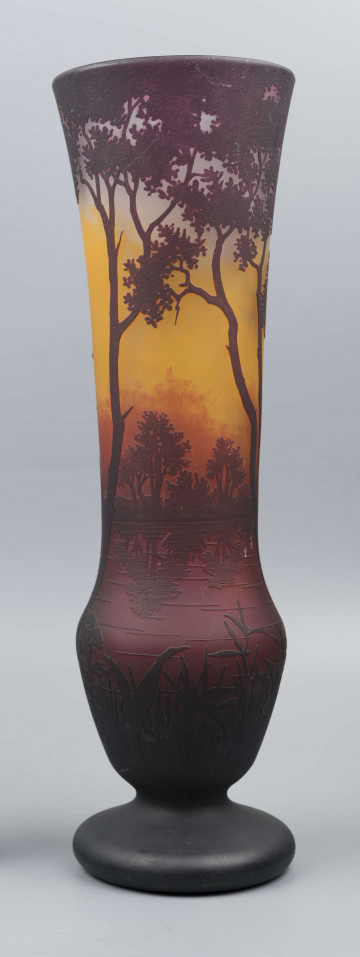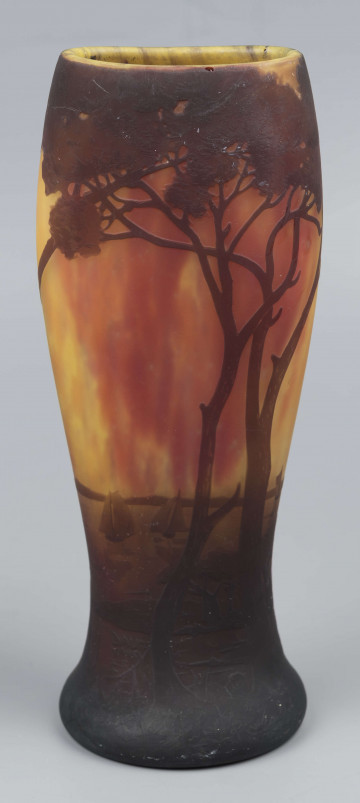
Vase
1904
National Museum in Lublin
Part of the collection: Glass products of Polish and European manufacturers of the 18th–20th c.
These beautiful bowls, goblets or a vase from the collection of the National Museum in Lublin, in the form of a baluster with a strongly flared top and a narrow, doubly tapered neck, are made of colourless tarnished glass, made of colourless, frosted glass, unevenly coloured orange-pink, with a visible plastic pattern of a freely thrown grey-green petunia branch with grey-purple flowers, are an example of the work of the French artist Émile Gallé. The objects coming out of his hand are the quintessential art of Art Nouveau encased in glass.
Émile Gallé was born in 1846 in Nancy. The artist was fascinated with the world of plants from an early age, which led him to later study botany. Also important is his work in a factory of ceramics owned by his father. In 1874, Gallé established his own glassworks in his hometown. In his early work he was inspired mainly by antique art, creating transparent or only slightly coloured glass products. As the glassworks developed and demand for his products grew, he developed his own unique style and developed innovative techniques, combining his love of plants with his technical skills. He made unusual objects by grinding or acid-etching coloured glass. Sometimes he would put two layers of glass, each of a different colour, on top of each other and then, by making incisions in the upper layer, he would achieve an interesting effect by exposing the lower layer. Furthermore, the artist, constantly experimenting with glass, sometimes injected air bubbles into it or incorporated various elements, such as pieces of metal. The development of his own and unique glass colouring techniques not only contributed to the artist obtaining colours unheard of in other workshops, but also to the start of series production of decorative layered glass objects. Émile Gallé's unique glass creations, which continue to delight the public, brought him fame, recognition and numerous awards and medals. He thus went down in art history as one of the most eminent Art Nouveau artists and a leading representative of the revived Nancy school.
Author / creator
Dimensions
cały obiekt: height: 9,5 cm, width: 14 cm
Object type
dish
Technique
grinding
Material
composite glass
Creation time / dating
Creation / finding place
Owner
The National Museum in Lublin
Identification number
Location / status

1904
National Museum in Lublin

1900 — 1910
National Museum in Lublin

1910 — 1915
National Museum in Lublin
DISCOVER this TOPIC
Museum of King Jan III's Palace at Wilanów
DISCOVER this PATH
Educational path